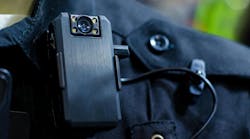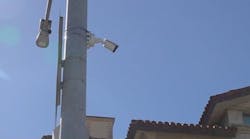High speed pursuits have always been a gamble. The risks are great: death, injury, liability costs. More attention is being paid to how and why officers take chase. More thought is being put into how it can be done better. After making a concerted effort to reduce speed and risky pursuits, those with an eye on the speedometer are seeing real results.
In the story Safety Tracks (February LET) Captain Larry Cecchettini (ret.) from Yolo County, Calif. and Vermont’s Sheriff Ray Allen emphasized the huge impact high speed pursuits have on their agencies, officers and the community. They suggested a few things managers can do to get their officers to slow down. The article talked about the use of increased hi-vis patrols, speed awareness posters in squad rooms, and programs like Destination Zero that encourage agencies to share best practices and what worked. But there are many angles from which to approach this problem.
There will always be times when an officer needs to pursue, say a fugitive robs a bank, but some new products are making this course of action unnecessary. These new-to-market tools have the ultimate goal of preventing pursuit in the first place. If the device allows for a vehicle to be tracked—or to not start at all—an officer need not pursue, and the suspect need not flee.
If all you’ve got in your trunk are spike strips it may be time to update—or add to—the arsenal.
Is that a banana in your tailpipe?
A police officer in Silicon Valley came up with a device that gets inserted into a vehicle’s tailpipe and immediately stalls the car. The concept is kind of comical when you imagine it. But it’s also pretty brilliant… and can save lives and a lot of hassle.
“I’ve been in so many situations where either pursuits caused damage or injuries or were terminated and we lost the suspect,” says XHAUSTR founder Gerg Berg. “It was one of those ideas—‘How do we stop it before it starts?’” While he worked to develop the product Berg was contacted by nonprofit group Pursuit Safety, which is made up of people who’ve lost family members due to police pursuits. “Statistics say there are 70,000 pursuits in a year and one person is killed each day…if you can stop one pursuit it can make a huge difference,” he says.
With tire deflation, a car may still ramble on with flat tires. To safely stop a car, why not stop its engine?
“Years ago people would go in and pull out the cables from inside for the spark plug wires, but now you have to get under the hood and all that. It really came back to the old banana in the tail pile… like in the old Beverly Hills cops movies,” says Berg. The XHAUSTR is inserted into a vehicle’s tailpipe and expands to create a seal so that when the vehicle is started no combustion can occur in the engine—it stalls out. The base material is metal, but it has a layer that forms to the shape of the pipe. It can be used on anything with a combustion engine and comes in a few different sizes (think mopeds up to Ford F5350s). One kit with 6 devices retails for around $650. It is designed to be simple and durable; it doesn’t cause damage to the vehicle and after it is removed the cars starts right back up.
The product has many potential uses: think bait car, auto theft task forces, SWAT and patrol. But it is primarily designed for a situation where officers are waiting for a suspect to return to a parked, unoccupied vehicle and they want to eliminate the chance the suspects will “run”.
Not long ago a federal agency used the XHAUSTR in a case with a fugitive on patrol who had a laundry list of warrants. While they did not know what residence or building the suspect was in, they knew the car associated with him. “Once the suspect gets in or around the car and you close in, unfortunately there are a lot of stories where the suspect starts ramming cars and not only damages cars, but gets out and a pursuit happens … which can be very deadly,” says Berg.
He adds part of the beauty of the product is that suspects in the vehicle aren’t even aware of what’s happening. While they’re trying to figure out why the car has stalled, and are trying to start it back up, officers have time to come in and make the arrest safely.
Track from afar
Over in the Midwest, Milwaukee PD is one of a handful of agencies to have recently enlisted the help of the StarChase device to help them end pursuits safely. A compressed-air launcher mounted behind the cruiser’s grille uses a laser to target the fleeing vehicle and deploys a GPS tag. Dispatch watches the location and movement of the tagged vehicle in real-time on a secure web-based mapping portal. Police (from the appropriate jurisdiction) are free to take their time and apprehend when the time is right.
“One of the reasons [Milwaukee] came to us was because they had a very well-intended policy which had cut down on pursuits in the city. But one of the unintended consequences of the policy was that you still had vehicles that drive away. In some cases they understand the policy and they drive away because of it. Nothing changes there; human behavior is still unfortunately [predictable] on the criminal side,” says StarChase LLC President Trevor Fischbach.
He adds, agencies should always consult with their own attorney or state attorney general when looking to implement a GPS tracking solution. The ACLU recently gave StarChase its stamp of approval after close review. An important thing to note is, in this case officers are foremost trying to effect a stop, but at the same time they are tagging a vehicle that they know has a very high flight risk. MORE “When you layer that in with policy it’s a real win,” says Fischbach.
Data from cruisers equipped with StarChase have shown that when a vehicle is tagged, that suspect vehicle slows to within 10 miles an hour of the posted speed limit within two minutes. Fischbach says they’ve never had a death during a StarChase pursuit, never had injuries or damage to property. On top of that, he claims the arrest rate is actually higher than in a traditional pursuit scenarios: “Traditional arrest rate is around 70 perfect; we’re in the high 80s, sometimes 90s,” says Fischbach.
Like the XHAUSTR, there is potential for this unique product beyond pursuit prevention. It is also proving itself a valuable component of an officer’s DUI toolkit.
Product integration,
Just because these new pursuit options have hit the market doesn’t mean that more traditional gear is left in the dust. The GPS tracker StarChase is meant to work with existing tools and tactics of law enforcement, including tire deflation. Fischbach puts it this way: “Imagine you’re tracking someone on a map. You now have a forward view of where that vehicle’s headed, what speed it’s travelling at. [You can] put your team in the right place to deploy tire deflation and not only deploy it…but deploy it in a much safer way because the speed is [much lower].”
In fact, some companies are rethinking tire deflation to make the process safer in general. In April of last year the company PacSci EMC began selling its NightHawk remote tire deflation product to law enforcement. The deployment method uses the STOP STICK tire deflation device to stop and secure vehicles from up to 100 feet away. It deploys and retracts in about two seconds flat. The product is currently in use by the Winnebago County Sheriff, Illinois Highway Patrol and Rockford, Illinois PD.
“Pursuit management” vs “pursuit prevention”
Is there a difference? Although things like tire deflation systems and tracking devices exist to help police manage pursuits more effectively and safely, the ultimate goal is preventing high speed pursuits in the first place. Fischbach says his product does both. “I’d like to lean towards the prevention side as much as possible. Most of them [police] know when a stop is going to go normal or when a stop will go sideways and that’s when we can help them keep a lid on things,” he says.
Both management and all-out prevention minimize risk because everybody slows down, including the suspect.
Products created to stop pursuits in their tracks are proving themselves on the street. But they also carry with them a significant psychological benefit for officers.
“The idea is that there won’t be a pursuit,” says XHAUSTR founder and police officer Greg Berg. “Being in a pursuit officers have to weigh all those difficult factors: what they’re wanting the suspect for, road conditions, associated dangers…with our product you don’t have to have any of those thoughts because the pursuit isn’t going on. The car’s disabled and hopefully the arrest happens very quickly after that.”
And unlike Milwaukee with its stringent policy, Arizona has a very broad policy on pursuits and tend to put a lot of discretion in troopers’ hands. Starchase’s Fischbach says their product puts a lot of officers at ease during stressful situations, whether they have policy in place or not.



